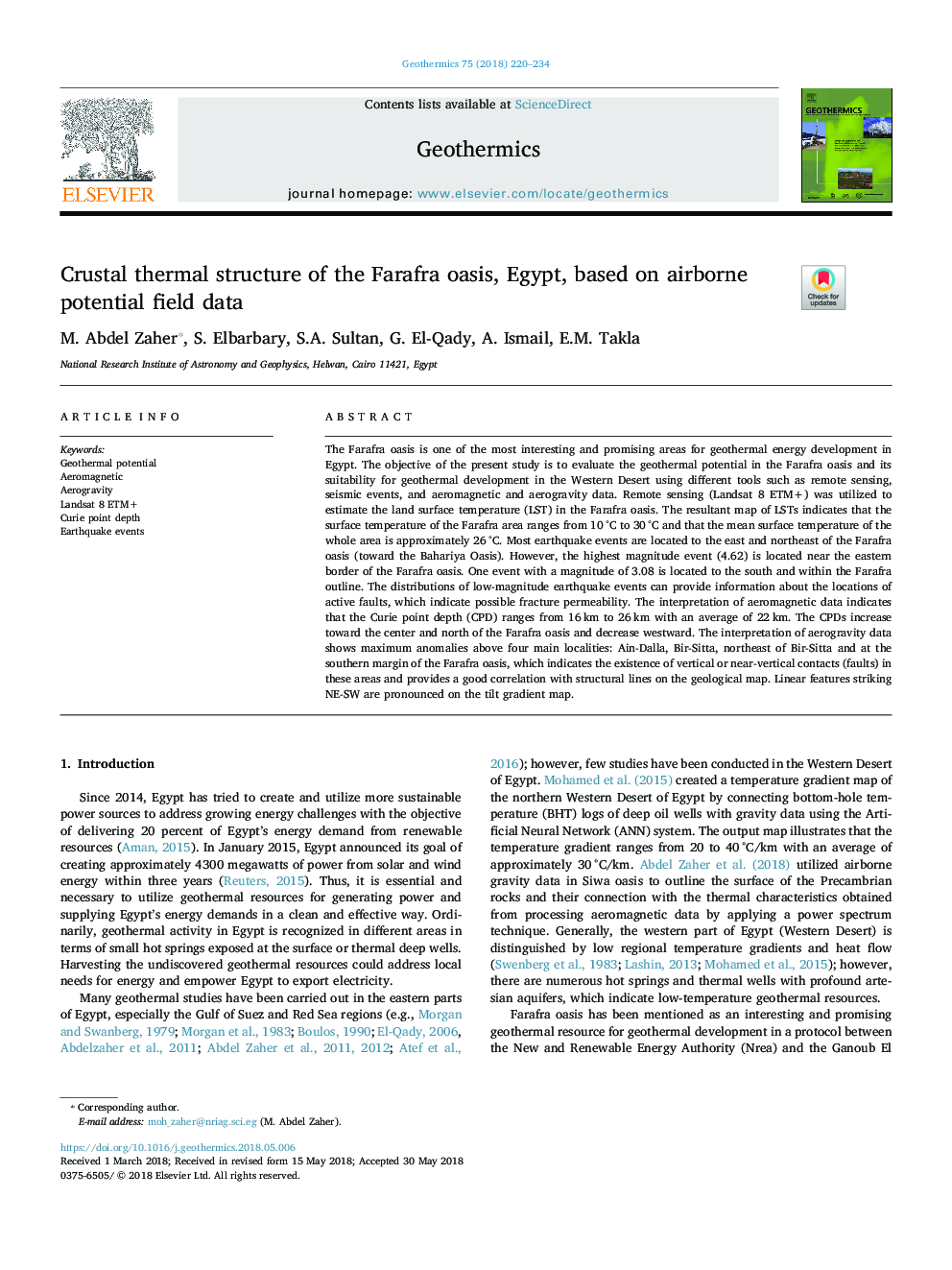| Article ID | Journal | Published Year | Pages | File Type |
|---|---|---|---|---|
| 8088526 | Geothermics | 2018 | 15 Pages |
Abstract
The Farafra oasis is one of the most interesting and promising areas for geothermal energy development in Egypt. The objective of the present study is to evaluate the geothermal potential in the Farafra oasis and its suitability for geothermal development in the Western Desert using different tools such as remote sensing, seismic events, and aeromagnetic and aerogravity data. Remote sensing (Landsat 8 ETM+) was utilized to estimate the land surface temperature (LST) in the Farafra oasis. The resultant map of LSTs indicates that the surface temperature of the Farafra area ranges from 10â¯Â°C to 30â¯Â°C and that the mean surface temperature of the whole area is approximately 26â¯Â°C. Most earthquake events are located to the east and northeast of the Farafra oasis (toward the Bahariya Oasis). However, the highest magnitude event (4.62) is located near the eastern border of the Farafra oasis. One event with a magnitude of 3.08 is located to the south and within the Farafra outline. The distributions of low-magnitude earthquake events can provide information about the locations of active faults, which indicate possible fracture permeability. The interpretation of aeromagnetic data indicates that the Curie point depth (CPD) ranges from 16â¯km to 26â¯km with an average of 22â¯km. The CPDs increase toward the center and north of the Farafra oasis and decrease westward. The interpretation of aerogravity data shows maximum anomalies above four main localities: Ain-Dalla, Bir-Sitta, northeast of Bir-Sitta and at the southern margin of the Farafra oasis, which indicates the existence of vertical or near-vertical contacts (faults) in these areas and provides a good correlation with structural lines on the geological map. Linear features striking NE-SW are pronounced on the tilt gradient map.
Related Topics
Physical Sciences and Engineering
Earth and Planetary Sciences
Geochemistry and Petrology
Authors
M. Abdel Zaher, S. Elbarbary, S.A. Sultan, G. El-Qady, A. Ismail, E.M. Takla,
